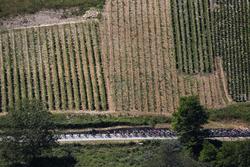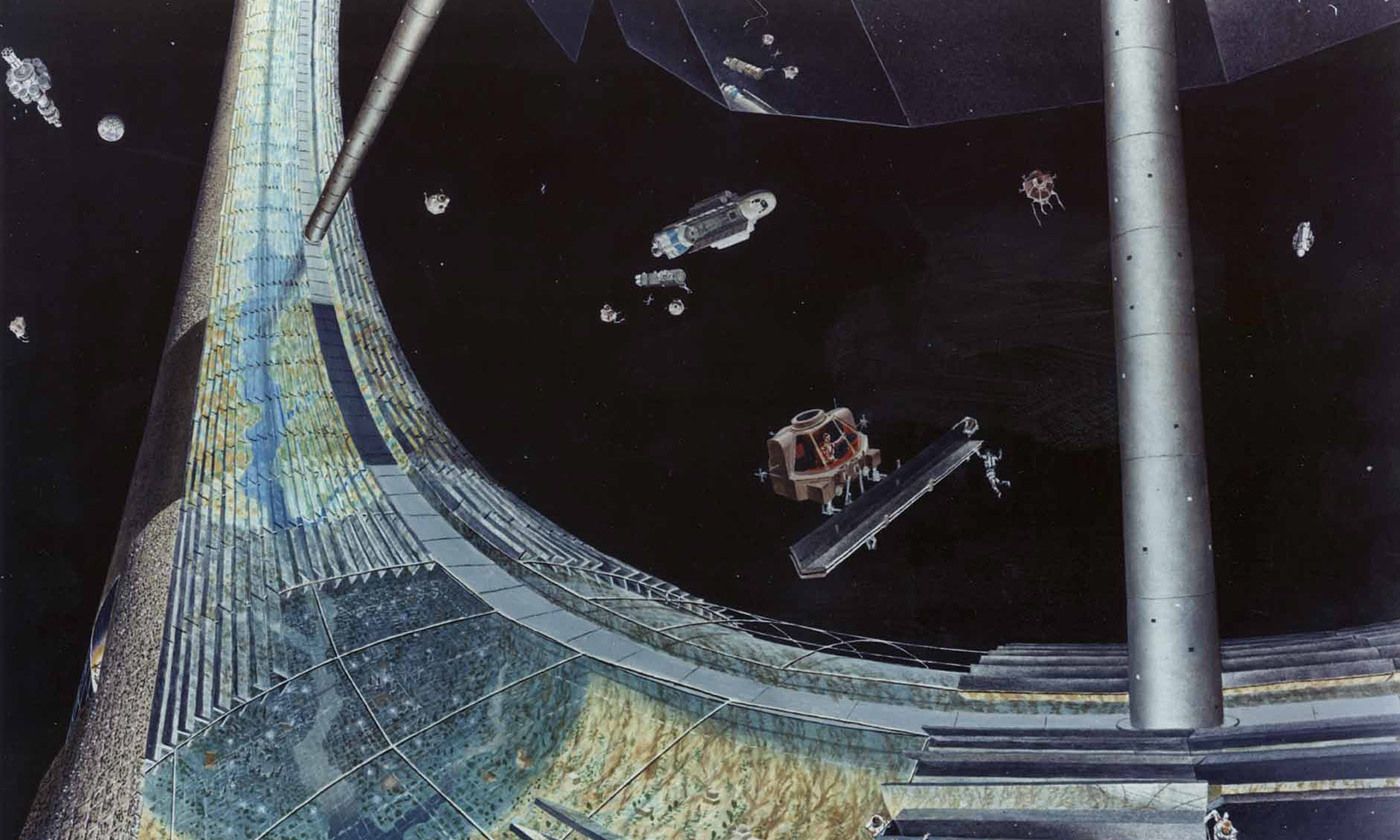Archive for the ‘food’ category: Page 295
Aug 19, 2016
Chocolate cake for breakfast? Research says it’s good for both your brain and your waistline
Posted by Shailesh Prasad in categories: food, neuroscience
We all know breakfast is the most important meal of the day. Here’s why it should also be the sweetest.
Aug 19, 2016
The Synthetic Biology Era Is Here—How We Can Make the Most of It
Posted by Karen Hurst in categories: bioengineering, biotech/medical, food
We are entering an era of directed design in which we will expand the limited notion that biology is only the ‘study of life and living things’ and see biology as the ultimate distributed, manufacturing platform (as Stanford bioengineer, Drew Endy, often says). This new mode of manufacturing will offer us unrivaled personalization and functionality.
New foods. New fuels. New materials. New drugs.
We’re already taking our first steps in this direction. Joule Unlimited has engineered bacteria to convert CO2 into fuels in a single-step, continuous process. Others are engineering yeast to produce artemisinin — a potent anti-malarial compound used by millions of people globally. Still other microbes are being reprogrammed to produce industrial ingredients, like those used in synthetic rubber.
Continue reading “The Synthetic Biology Era Is Here—How We Can Make the Most of It” »
Aug 16, 2016
Regenerative Medicine: Plasma Being Used To Improve Bone Healing
Posted by Shailesh Prasad in categories: biotech/medical, food, nuclear energy, space travel, weapons
Scientists have just found a way to make use of plasma, the fourth state of matter, to improve bone development. Using cold fusion, researchers were able to initiate increased bone growth.
It is a bit ironic that plasma is the least known state of matter, when in fact it is the most abundant in the universe. It is found in our Sun and all other stars, lightning, in our TVs, fluorescent light, and neon signs, and (purportedly) even in our favorite fictional weapon in the Star Wars universe, the lightsaber.
Plasma can be classified according to the degree of ionization, temperature, etc, but whatever form it may take, plasma has been used in various fields, such as in spacecraft propulsion, agriculture, and quite recently, in medicine.
Continue reading “Regenerative Medicine: Plasma Being Used To Improve Bone Healing” »
Aug 15, 2016
Exclusive Report: The Rise of a More Intelligent Food System
Posted by Karen Hurst in category: food
Patrick Keating of Keating International gives an exclusive insight into how the food system has progressed since the earliest forms of agtech.
A team of researchers at Columbia University has developed a 3D food printer capable of printing and cooking multiple ingredients at one time.
Aug 9, 2016
CRISPR May End the Use of Pesticides
Posted by Karen Hurst in categories: biotech/medical, food
Nice.
This summer, more than a million tons of chardonnay grapes are plumping on manicured vineyards around the world. The grapes make one of the most popular white wines, but their juicy fruit and luscious leaves are also targets for diseases such as downy mildew, a stubborn fungus-like parasite.
Aug 6, 2016
How to Feed Ten Billion: Lab-Made ‘Clean Meat’ Burgers are Future of Food
Posted by Dan Kummer in categories: energy, food
The rapid growth of the world’s human population raises the issue of more efficient food production; one solution to the problem is “clean meat,” which is produced in the equivalent of meat fermenters, Bruce Friedrich, Executive Director of the Good Food Institute, told Radio Sputnik.
The world’s human population reached 7.4 billion in March 2016, having reached 7 billion in October 2011. In 2050, it is expected to reach 9.7 billion, raising the question of how to produce enough food for everybody.
Continue reading “How to Feed Ten Billion: Lab-Made ‘Clean Meat’ Burgers are Future of Food” »
Aug 3, 2016
Effective Therapies to Extend Healthy Life May Well be Widely Available for a Decade or More in Advance of Definitive Proof
Posted by Montie Adkins in categories: biotech/medical, food, life extension
Fixing one thing only gets you so far, as all the other forms of damage will still, on their own, kill you. Aubrey de Grey of the SENS Research Foundation believes that only small gains in overall life span are possible without addressing all of the causes of aging.
Five years from now, it will be possible to take a trip overseas to have most of the senescent cells that have built up in your tissues cleared away via some form of drug or gene therapy treatment. That will reduce your risk of suffering most age-related diseases, and in fact make you measurably younger — it is a narrow form of rejuvenation, targeting just one of the various forms of cell and tissue damage that cause aging, age-related disease, and ultimately death. I say five years and mean it. If both of the present senescent cell clearance startup companies Oisin Biotechnologies and UNITY Biotechnology fail rather than succeed, and it is worth noting that the Oisin founders have a therapy that actually works in animal studies, while drugs and other approaches have also been shown to both clear senescent cells and extend life in mice, then there will be other attempts soon thereafter. The basic science of senescent cell clearance is completely open, and anyone can join in — in fact the successful crowdfunding of the first Major Mouse Testing Program study earlier this year was exactly that, citizen scientists joining in to advance the state of the art in this field.
Five years from now, however, there will be no definitive proof that senescent cell clearance extends life in humans, nor that it reduces risk of age-related disease in our species over the longer term. There will no doubt be a few more studies in mice showing life extension. There will be initial human evidence that clearance of senescent cells causes short-term improvements in technical biomarkers of aging such as DNA methylation patterns, or more easily assessed items such as skin condition — given how much of the skin in old people is made up of senescent cells — or markers of chronic inflammation. These are all compelling reasons to undertake the treatment, but if you want definite proof of life extension you’ll have to wait a decade or more beyond the point of first availability, as that is about as long as it takes to put together and run academic studies that make a decent stab at quantifying effects on mortality in old people.
Aug 3, 2016
Would it be immoral to send out a generation starship?
Posted by Andreas Matt in categories: biotech/medical, education, ethics, food, health, neuroscience, security, space travel
If human beings are ever to colonise other planets – which might become necessary for the survival of the species, given how far we have degraded this one – they will almost certainly have to use generation ships: spaceships that will support not just those who set out on them, but also their descendants. The vast distances between Earth and the nearest habitable planets, combined with the fact that we are unlikely ever to invent a way of travelling that exceeds the speed of light, ensures that many generations will be born, raised and die on board such a ship before it arrives at its destination.
A generation ship would have to be a whole society in microcosm, with hospitals and schools, living quarters and perhaps entertainment districts, a security force, maybe even a judiciary. It would need to be able to provide food for its crew, and that might require agriculture or aquaculture, perhaps even domestic animals (which might also be needed for the colonisation effort). Its design therefore presents a major challenge: not just to engineers but also to social scientists. How should the crew be selected and the environment structured to minimise interpersonal conflict? What size of population is optimal for it to remain committed to the single overarching project of colonising a new planet without too much of a risk of self-destructive boredom or excessive narrowing of the gene pool? Does mental health require that a quasi-natural environment be recreated within the ship (with trees, grass and perhaps undomesticated birds and small animals)?
As well as the technological and social challenges confronting the designers of such ships, there are fascinating philosophical and ethical issues that arise. The issue I want to focus on concerns the ethics of a project that locks the next generation into a form of living, the inauguration of which they had no say over, and that ensures their options are extremely limited.
Continue reading “Would it be immoral to send out a generation starship?” »
















